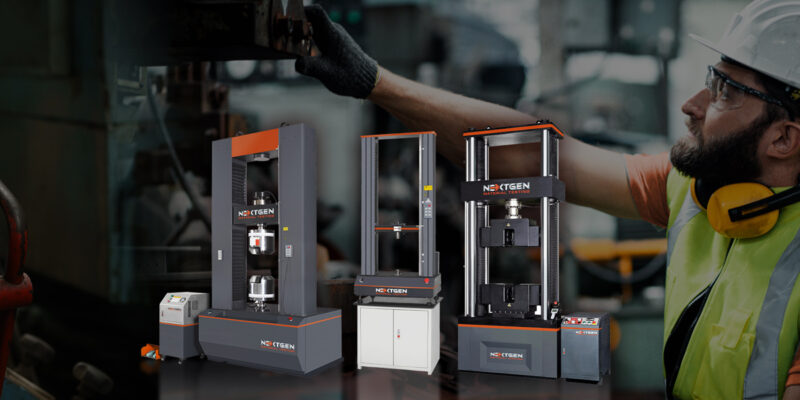Universal Testing Machines (UTMs) are crucial instruments used in quality control, product development, and research. These machines operate by applying a predetermined load to a sample material to measure its strength and deformation characteristics. However, like all electrical/mechanical systems, UTMs require regular maintenance and calibration to ensure that they produce accurate results.
In this blog, we will discuss UTM calibration in detail and how it can help your business. Let’s start the discussion.
What is UTM Calibration?
UTM calibration refers to a process where the machine’s performance is evaluated against known standards to determine its accuracy and reliability. This typically involves adjusting or modifying various components of the system until it meets specific criteria.
During the calibration process, several key parameters are tested for accuracy. These include:
- Load capacity: The maximum limit of force that can be applied before deformation occurs.
- Speed control: The precise measurement and adjustment of the rate at which the force is applied.
- Crosshead displacement: Measuring how far the specimen moves in either direction during testing.
- Strain measurement: Determining how much the material being tested deforms under stress.
- Deflection correction: Ensuring that any deflection that might occur during testing is correctly accounted for and does not affect final measurements.
Why Your Business Needs UTM Calibration
While performing regular maintenance on your UTM can help reduce wear and tear, nothing compares to having your machine calibrated by an experienced professional regularly. Here are four reasons why you should make sure that your UTM undergoes frequent calibration:
1. Precision – Accurate data leads directly to reliable products or well-founded conclusions when conducting research or developing new materials/technologies/products/etcetera.
2 .Compliance – Regularly testing your equipment ensures it remains in compliance with relevant industry standards, such as ISO 9000 series released by the international organization for standardization (ISO).
3 . Safety – If your test results end up being inaccurate due to using a malfunctioning UTM, it could lead to an unsafe product or process, which could potentially have severe financial and safety consequences.
4 . Cost Savings – Frequent calibration can help you catch problems before they cause significant damage. If your UTM starts to demonstrate inconsistencies earlier as compared to later, you can save more money by getting it repaired than if it breaks entirely.
How Often Should You Calibrate Your UTM?
It is best practice to calibrate UTMs at least once a year in most cases. However, higher-use UTMs might require more frequent calibration since the wear-and-tear on these machines tends to be higher. If your machine shows signs of malfunctioning despite regular maintenance or gets notably damaged by other factors such as accidents or natural disasters, ensure immediate recalibration.
It is also necessary to ensure that only experienced and trained professionals perform the calibration process when needed, any more than just maintaining your UTM regularly. Calibration service providers should possess qualifications in electrical/mechanical engineering and reliability in their diagnosis of issues with UM components before they get started on recalibrating (if required) anything inside it.
To guarantee consistently reliable results from a machine having many moving parts and interdependent subsystems like from the said machine would mean getting it serviced frequently, ensuring any mechanical wear and tear, no matter how minor, won’t affect the final results.
Therefore, It’s essential to have trained professionals diagnose multiple issues that typically crop up during inspection. Regularly servicing technology devices will prevent bigger headaches down the line while simultaneously saving costs (financially) better spent elsewhere, such as growth strategy plans, rather than constantly repairing or replacing broken-down machinery with broader implications due to cost overruns felt throughout manufacturing plants.
Conclusion
UTM machines are integral equipment for organizations to work in full swing. However, they rely heavily on accuracy and reliability for accurate results; hence their maintenance and frequent calibration are crucial for their continued operation without fail to provide the correct data every time a material’s strength is checked out. So in case, you want your machines to perform top-notch, invest in UTM calibration at regular intervals from professionals.













Comments